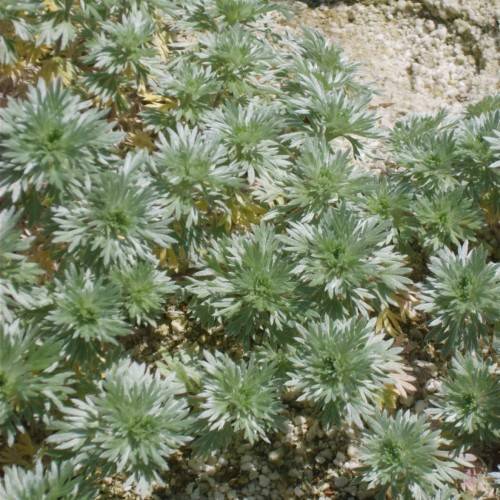
Siberian Wormwood
Artemisia laciniata subsp. laciniata
Watering:
Minimal
Hardiness Zone:
Sun:
full sun
Leaf:
Yes
Growth Rate:
Low
Poisonous To Humans:
Yes
Poisonous To Pets:
Yes
Drought Tolerant:
Yes
Salt Tolerant:
Yes
Invasive:
Yes
Care Level:
Medium
watering
Forked Wormwood should be watered once every 1-2 weeks, depending on the soil moisture. The soil should be dry to the touch before watering, but not completely dried out. Water should be applied slowly around the base of the plant, avoiding the leaves and stems. If the soil is very sandy, the plant may need to be watered more frequently as it will not hold moisture as well. Overwatering can be an issue, so be aware of this when caring for Forked Wormwood.
sunlight
Forked Wormwood (Artemisia hyperborea) typically enjoys full sunlight 5 to 6 hours a day. It can thrive in a sunny, south-facing location in the garden. It is best to keep the plant in an environment with plenty of fresh, full sunlight. However, it can also tolerate partial shade and some indoor locations, as long as it gets at least 4 to 5 hours of direct sunlight each day. Additionally, the plant does not appreciate too much heat and should be kept in a cooler place in the summer. Direct afternoon sunlight should also be avoided.
pruning
Forked Wormwood should be pruned in late winter or early spring, before the plant begins actively growing again. Trim off any dead or diseased stems, and shape the plant by cutting back its longest branches to encourage bushiness. Thin out the inner branches by cutting them back at their base, leaving no more than 1 third of the stems. Do not prune after mid-summer, as this will limit flowering and prevent the plant from setting seed.
